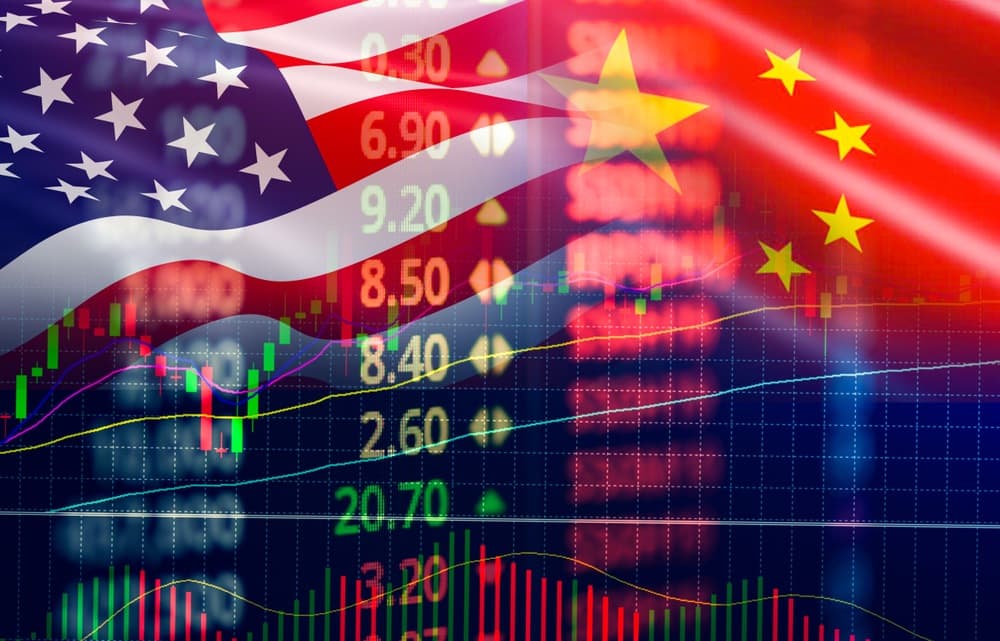
Andrew and I were watching the market open this morning with a little more intensity than usual. After the Labor Day pause, futures pointed down. Today marks 100 days since the “Liberation Day” rout that shocked the markets after April 2. Seems fitting to open a historically difficult September.
September has long been the cruelest month for stocks, and bond vigilantes are already stirring. The ombre noir (dark shadow) has a long history.

Average annual reports for September are consistently negative. Even October – often the month of market shocks – has posted a gain on average. (Source: Market Rebellion)
Here’s this year’s setup: governments from Washington to Tokyo need endless borrowing to fund deficits, entitlements, and aging populations.
Bond buyers, no longer lulled by financial repression of the Bernanke and Yellen Fed years, want higher yields.
Thirty-year Treasurys now hover near 5%. In the UK, gilts are over 6%. “This is the level,” notes our Portfolio Director Andrew Packer, “where markets start to freak out a bit.”
Stocks, meanwhile, are rolling into seasonal weakness, with traders taking profits and moving into debt for safety.
One anecdote to illustrate: one of our son’s school friends is a junior trader for JPMorgan sitting on the private equity desk.
Among other tasks, they handle trades for the firm’s “whales” – investors with accounts large enough to warrant discreet, special attention.
Over the weekend, the young man inadvertently let slip that one of the clients was planning to sell a large block of Nvidia this morning at the open.
We’ll get into some reasons that may have impacted the “whales” decision below…
The irony? Just last week, GDP was revised higher. Q2 growth came in at 3.3% instead of 3.0%. Business investment and trade surged.
During a Grey Swan Live! worthy of your attention, Andrew Zatlin cautioned that the headline number hides a softer underbelly: consumer spending grew at only 1.6%.
Americans are fueling that growth with debt, not rising incomes. “Don’t fight the Fed. Don’t fight the American consumer,” Zatlin quipped. But he added somberly: “In a debt-fueled society, it works… until it doesn’t.”
The Fed can cut short-term rates. But unless it buys the entire curve, long yields will rise. In the 2010s, central banks repressed yields to avoid deflation.
Today, inflation means repression doesn’t work. Investors want a real return, and they’re demanding it. Until a crisis breaks the pattern, pressure points will keep building.
 Nvidia’s Cisco, Some Details
Nvidia’s Cisco, Some Details
Markets entered the holiday weekend on a high.
The S&P notched another record, and Wall Street hung on Nvidia’s earnings like a lifeline. Nvidia isn’t just a stock — it’s become the bellwether for the entire AI economy, much as U.S. Steel once reflected America’s industrial might.
But Andrew Zatlin reminded us of Cisco Systems circa 2000. He gained first-hand knowledge as a Cisco vet who lived through the boom and bust of the once-mighty router manufacturer.
Back then, Cisco gear was the backbone of the internet. Sales grew 50% year after year, the stock rose eightfold, and demand outstripped supply.
Then came rationing, overordering, and cancellations.
When growth slowed from 50% to 30%, the stock cratered from $80 to $20. The collapse didn’t stop with Cisco. It cascaded through semiconductors, software, Silicon Valley jobs, and the entire economy.
Zatlin sees Nvidia setting up the same way.
“If growth stumbles, it won’t be gradual — it will be a sudden pull-the-rug moment,” he warned. A 20% drop in Nvidia today would erase $1 trillion in market value, triggering margin calls and leverage unwinds across the ecosystem. The parallel is uncanny — and ominous.
(Note: Zatlin forecast a sharp pull-back for Nvidia in the second quarter of 2026, so there’s still time. In fact, his overall forecast for the S&P 500 is for it to end 2025 with a 15-20% gain on the year, which in and of itself would be a historic three-year winning trend. As we said, Zat’s Grey Swan Live! with us from Friday is worth a listen. Paid members can access it here. Or you can subscribe to listen, here.)
 Tariffs and Alliances
Tariffs and Alliances
While Wall Street parses yields and chips, geopolitics is shifting. Over the weekend, Xi Jinping hosted Modi and Putin at a regional summit designed to flex against U.S. dominance. Modi leaned into Russian energy deals, even as Trump hit India with 50% tariffs.
For decades, Washington courted Delhi as a counterweight to Beijing. Now tariffs may be pushing India into China’s orbit.
Meanwhile, Congress returns from recess facing a September 30 shutdown deadline. At the same time, chaos rocks the CDC after Trump fired Director Susan Monarez, prompting four senior resignations.
Nine former directors warned in the New York Times that RFK Jr.’s meddling is “unlike anything our country has ever experienced.” Add the ongoing Fed battle and you get a September calendar fraught with landmines.
 AI’s Energy Appetite
AI’s Energy Appetite
There’s also the practical problem of powering the boom. Electricity prices are climbing in a straight line as AI data centers expand.

You have no doubt noticed an increase in energy rates on your own bill. (Source: BCA Research)
Vance Ginn, writing for AIER, notes that Texas, once a haven for cheap power, now risks drifting toward California’s high-cost model under new subsidies and mandates.
As we’ve been suggested in the Grey Swan Bulletin, energy, not chips, could become the persistent bottleneck for AI. That’s why nuclear stocks have had a strong year – backed by executive orders to speed up production.
 Real Estate Cracks
Real Estate Cracks
Another casualty of the AI makeover of the economy got its start in earnest during the mal-timed economic lockdown of the pandemic era.
While tech soars, commercial real estate is getting kicked in the teeth.

Delinquencies on office-backed securities hit 11.7% in August, the highest ever. (Source: Wolf Street)
One in five offices now sits empty, nearly double the vacancy rate of five years ago. It’s a quiet crisis, but one that echoes past downturns: bubbles tend to pop in more than one sector.
 Big Trend: Gold Rising, Dollar Slipping
Big Trend: Gold Rising, Dollar Slipping
Gold now accounts for 24% of central bank international holdings, the highest percentage in 30 years. The dollar’s share has slipped to 42%, its lowest since the 1990s.

“Gold is replacing fiat currencies as a reserve currency,” write analysts for the Kobeissi Letter.
“Gold’s share of global international reserves rose 3 percentage points in Q1 2025, to 24%, the highest in 30 years. This marks the 3rd consecutive annual increase.”
Our buddy Porter Stansberry commented on X, it’s “the end of America” — the slow erosion of reserve-currency privilege.
His survival kit is consistent with the Grey Swan long-term outlook: “1. Own a great business; 2. Hold real money — gold, bitcoin. 3. Sell the dollar (borrow long-term, at fixed rates).”
 Pax Americana at Risk
Pax Americana at Risk
Eighty years ago today, Japan surrendered aboard the USS Missouri, closing World War II and inaugurating Pax Americana: the U.S. dollar as the world’s reserve and U.S. military power as the global guarantor.
Both pillars are now under revision. One data point: what the Germans refer to as zeitenwende.

“As suspicion of Russia and China mounts in the West,” the data journalists at Statista.com observe, “the United States is pulling away from international engagements, and Europe is undergoing a pivotal moment. This has been dubbed ‘Zeitenwende’ in Germany, meaning watershed moment or literally ‘turning of the times’. After a period of stagnation, NATO met its goal in just two years.”
In addition to funding security guarantees, Trump’s Great Reset strategy challenges Fed independence, rewrites trade through tariffs, and leans toward fiscal dominance.
Abroad, China, India, and Russia edge into alignment. History shows: systems forged in crisis endure for decades — until they don’t.
Sometimes the big winners are unexpected.
Anguilla, the Caribbean island, lucked into the “.ai” internet domain in the 1980s.
Last year alone, it collected $39 million in domain fees — nearly a quarter of its government revenue. This year, it expects to collect $49 million.
In a bubble world, even quirks of history can mint fortunes.
~ Addison
P.S.: Grey Swan Live! continues Thursday at 2 p.m. ET with Ian King. Please note the new time. We expect our members in California will appreciate the extra time in the morning to brew coffee and prepare for Ian’s insights:
Ian’s recent predictions include a new event that could trigger a new crypto boom, sending the market cap of the space to $8.5 trillion by 2030 – as well as the latest on President Trump’s plans for a Strategic Bitcoin Reserve.
Ian will cover some of the top token opportunities in the cryptocurrency space as this asset class continues to push higher.
Don’t miss out on these great insights.
Finally, thanks to those of you who joined on Friday for a live Zoom call with the folks at Prime Corporate Services.
During the call, the team showed the tremendous value of getting set up to invest properly so that you can keep as much of your gains as legally possible — in ways that individual investors often miss out on.
Like I’ve said – this is the kind of thing that’s very personal to me. With the calendar turning over to September, the window is narrowing to get set up for 2025 and to take advantage of tax benefits you’re entitled to – if you’re set up properly.
We’ve arranged for a replay for those who missed it here, but we can’t keep this opportunity open for much longer.
Your thoughts? Please send them here: feedback@greyswanfraternity.



